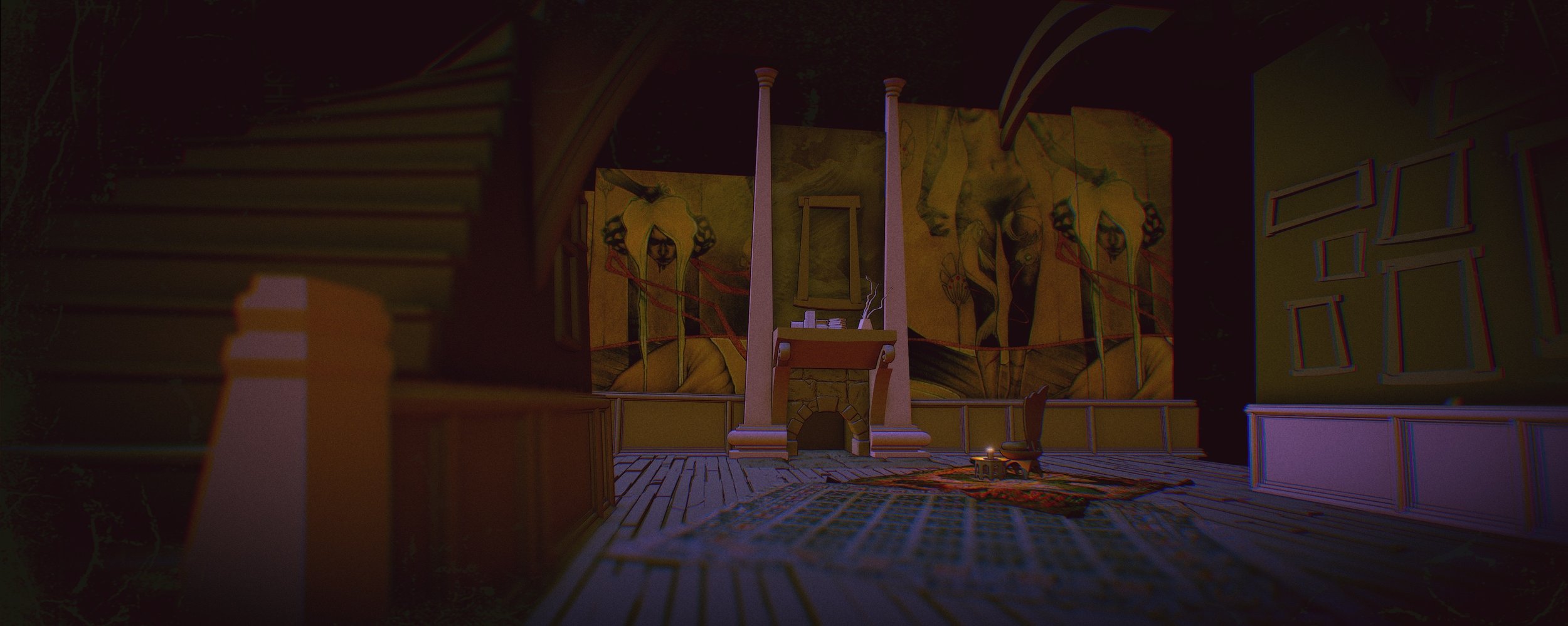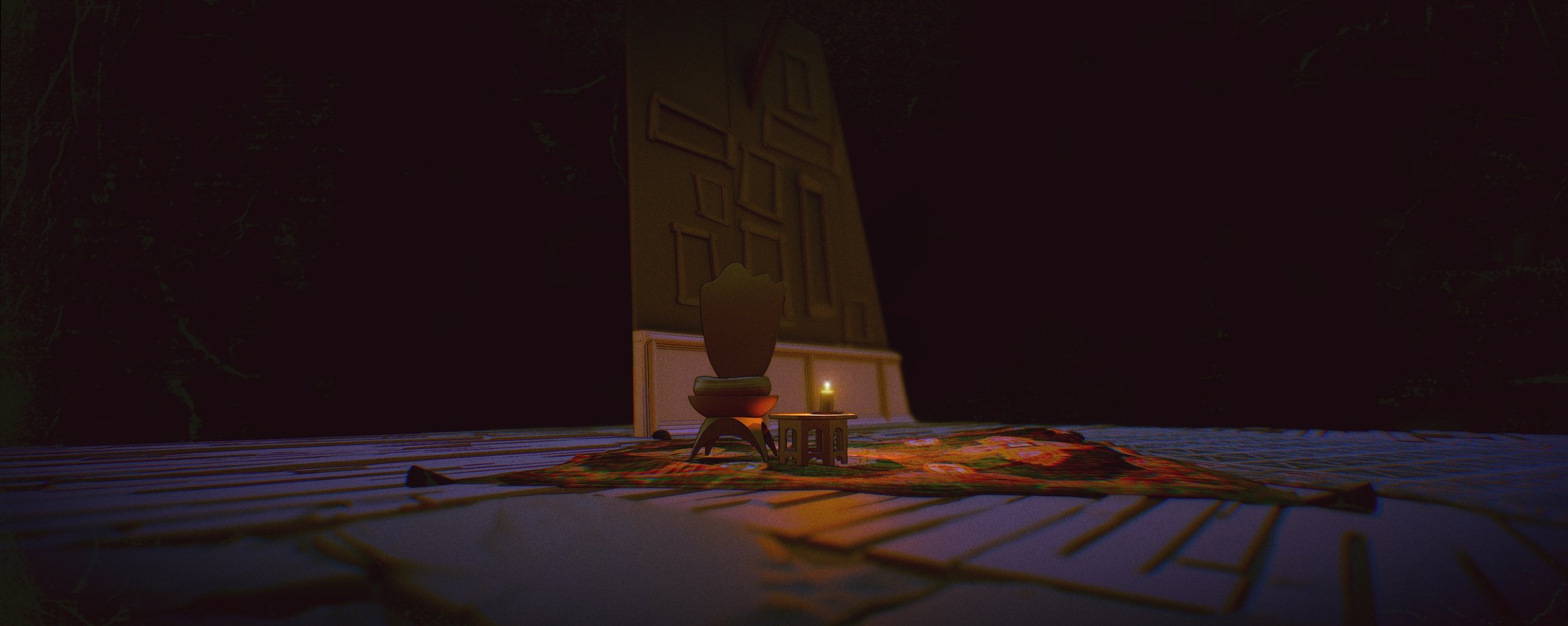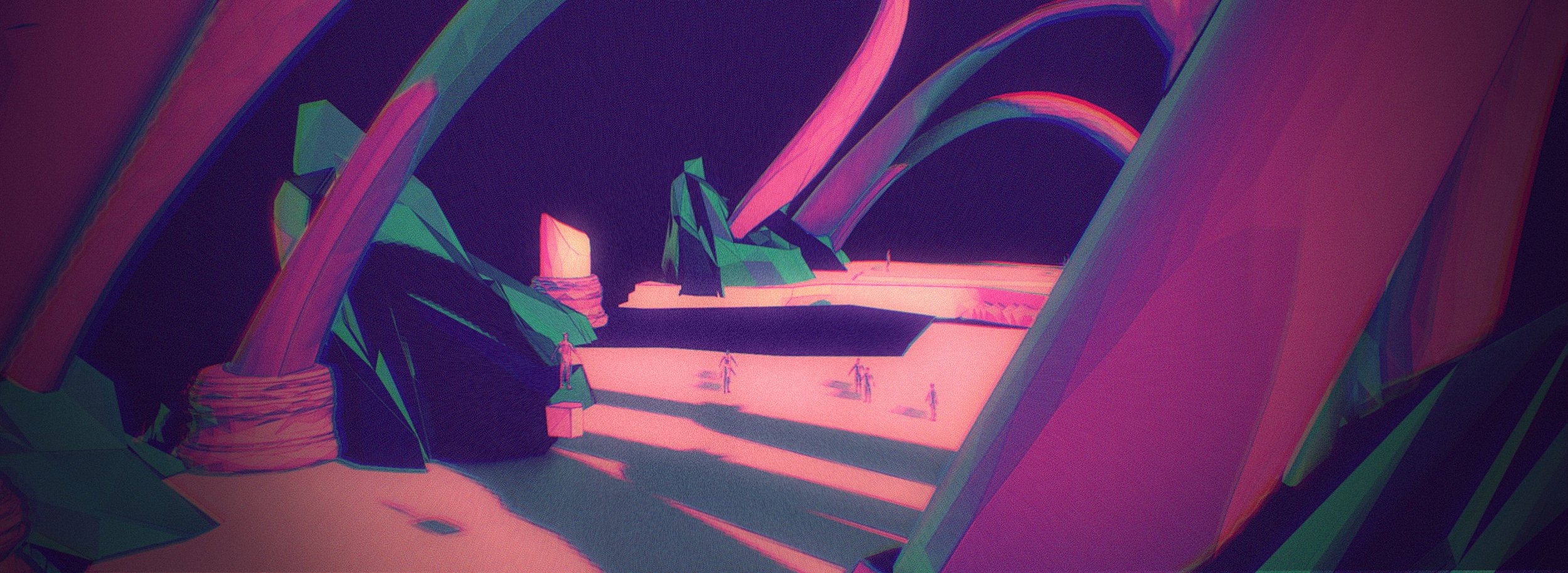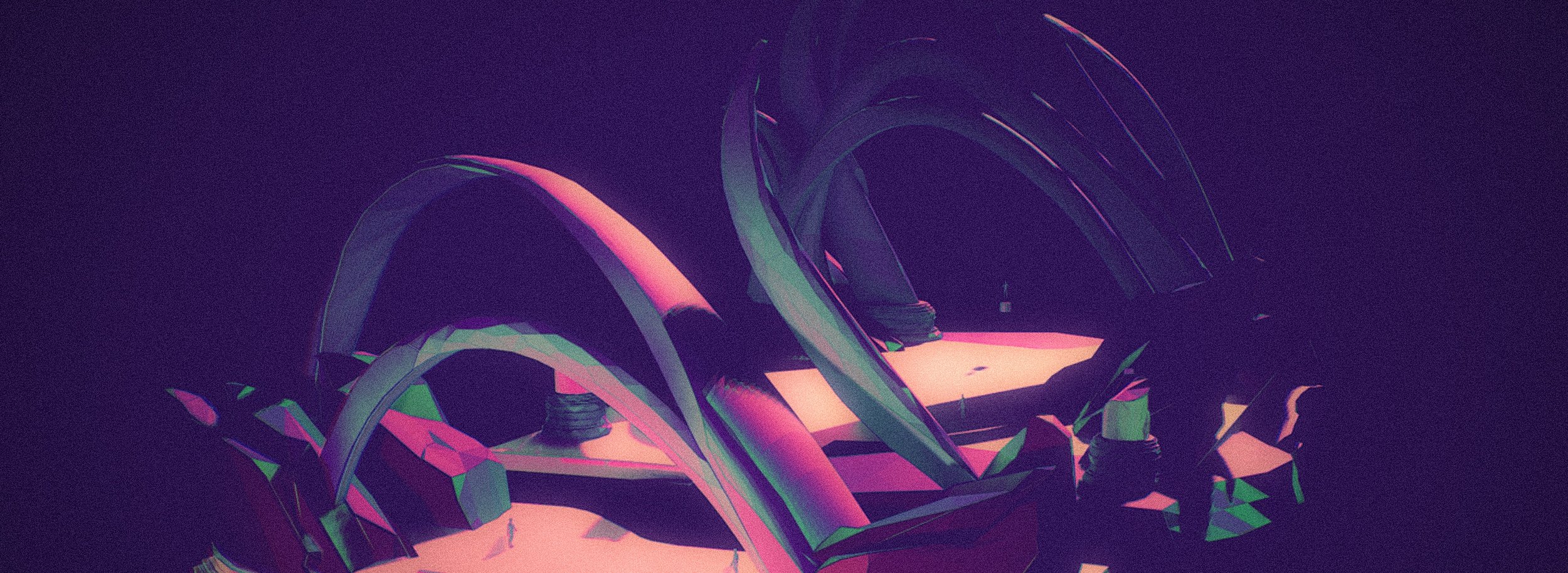
SET DESIGN
empty spaces: an experiment in storytelling
I’ve always been fascinated by theater stage design and expressionist film; and personally, I find excellent set design a challenge like no other. This design is a mini film/3D model study influenced by artists such as Ming Cho Lee and Fritz Lang - in which positive and negative space tell a story through lost and found information, rhythmic movement of shape, and delineating only those particulars which are necessary to create a mood and narrative, leaving all else to the imagination.
DC metal force: the technis arena
The Technis Arena set posed some very interesting and difficult conceptual problem solving. The language was built to be organic, light but reminiscent of “terrain”, and seem slightly impossible. The idea behind the opposing forms of swooping, light arcs grounded by heavy crystal-like forms was that the characters could disappear and reappear in and out of these shapes and dynamic shadow and light shapes formed by the set itself. I wanted it to be an extremely volatile and dynamic set that was very responsive to changes in lighting, as the set is meant to resemble liquid crystal states in physics in order to give it the ethereal quality you see in these images of the model below.
the moon followed me to Falmouth: the harbor tavern
The harbor town of Falmouth was historically built of waddle and daub but over the years an iconic, white-washed surfacing began to cover it, and is now the current historically accurate upkeep of the area. At first I sketched out the more Tudor-style waddle and daub but we ended up adopting the limestone wash for its cultural significance for the film, even though it is technically after the period of the time period. I modeled the interior and exterior of the tavern roughly in 3D for my own reference as well as the storyboard artist, and even though the final film’s backgrounds were to be painted in 2D, the models provided us with a consistent means of layout later in production.
the explorer’s estate
A personal project and first foray into using 3D modeling to assist my drawing. A lot of growth and joy came out of this set and I am very nostalgically attached to it.
the Parsi hut
Another early personal project from The Just so Stories written by Rudyard Kipling. While not politically correct stories, they offer ample opportunity to study different cultures and a chance to design more sensitively. I did a lot of research on what “Parsi” means and meant in context and without. I researched textile designs, crockery, environment, and different styles of housing in and around present-day and historical Iran and Turkey, which is where the main character in this story is technically from. The Parsi (or Parsee) people matriculated from ancient Persia and remain a very small population in the Middle East. While I didn’t utilize 3D for this design, I still feel it has a certain amount of charm and I did my best to be as culturally and ethnically authentic as I could.



















